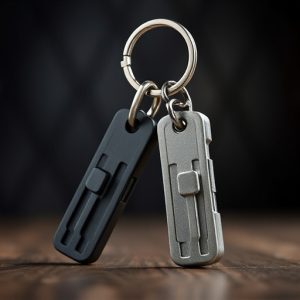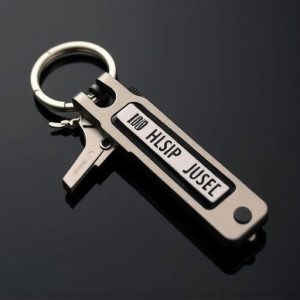Compact Keychain Self-Defense Legal Requirements: Global Guide to Safety
Navigating the legal framework for compact keychain self-defense tools is crucial due to varying reg…….
Navigating the legal framework for compact keychain self-defense tools is crucial due to varying regional regulations. These devices, designed for easy carrying, fall under self-defense or emergency protection categories, requiring compliance with safety standards, offensive capability restrictions, clear labeling, age restrictions, and ethical development and distribution practices. Understanding global variations in laws, influenced by cultural perspectives, is essential for both manufacturers and users to ensure legality while prioritizing personal security. Best practices include adhering to strict design, materials, labeling, and user manual guidelines for manufacturers, and educating oneself on local laws and practicing responsible usage for users.
Staying safe while on the go is a priority, and compact keychain self-defense tools offer a discreet yet powerful solution. This article guides you through the legal landscape surrounding these handy devices, ensuring users and manufacturers alike stay compliant. We explore global variations in regulations, highlighting key components for safety and legality. By understanding the legal frameworks, you can protect yourself while adhering to important standards, making your compact keychain self-defense tool a reliable companion.
- Understanding Legal Frameworks for Compact Keychain Self-Defense Tools
- Key Components to Consider for Compliance
- Regional Variations in Regulations: A Global Perspective
- Ensuring Safety and Legality: Best Practices for Manufacturers and Users
Understanding Legal Frameworks for Compact Keychain Self-Defense Tools
When it comes to compact keychain self-defense tools, understanding the legal frameworks is crucial for both manufacturers and users. Different regions have varying regulations regarding personal defense devices, especially those designed to fit easily on keychains. In many countries, these tools are categorized under self-defense or emergency protection equipment, subject to specific laws and guidelines.
The legal requirements often focus on factors such as the tool’s design, functionality, and intended use. For compact keychain self-defense tools to be legally compliant, they should meet safety standards, have limited offensive capabilities, and not cause unnecessary harm. Some jurisdictions also mandate labeling and packaging information, as well as age restrictions for purchase and possession. Staying informed about these legal aspects ensures that the development and distribution of such devices remain responsible and within ethical boundaries.
Key Components to Consider for Compliance
When considering the legal requirements for compact keychain self-defense tools, several key components come into play to ensure compliance. These devices, designed to fit comfortably on a keychain, must adhere to specific standards and regulations to maintain their effectiveness while adhering to legal boundaries. One critical aspect is their functionality; these tools should be capable of providing a strong deterrent and, if necessary, effective self-defense capabilities without causing unnecessary harm or violating local laws regarding force.
The design and construction materials used in compact keychain self-defense tools play a significant role in compliance. They should be durable yet lightweight, ensuring ease of carry and minimal impact on the user’s daily life. Materials used must also comply with any relevant regulations, especially if they involve metals or other components subject to restrictions. Additionally, clear labeling and packaging information are essential to guide users on safe use and legal considerations surrounding such devices.
Regional Variations in Regulations: A Global Perspective
In the global landscape, regulations surrounding compact keychain self-defense tools exhibit significant regional variations. What is legal in one country may be strictly prohibited in another, making it essential for individuals considering carrying such devices to understand the local laws. These differences stem from diverse cultural perspectives on personal safety and the interpretation of legislation by individual jurisdictions.
For instance, many Western countries tend to have more liberal policies regarding self-defense tools, often allowing compact keychain devices as long as they meet specific criteria related to functionality and force level. In contrast, some Asian and Middle Eastern nations maintain stricter controls, often banning or heavily regulating all forms of personal defense tools, including compact keychains, for reasons of public safety and order. Understanding these variations is crucial for ensuring compliance with the law while prioritizing personal safety.
Ensuring Safety and Legality: Best Practices for Manufacturers and Users
In the realm of compact keychain self-defense tools, ensuring safety and legality is paramount. Manufacturers must adhere to strict guidelines when designing and producing these devices to protect users and avoid legal repercussions. Best practices include incorporating durable yet lightweight materials that meet industry standards for impact resistance and sharp edge control. Additionally, clear labeling and user manuals are essential to educate consumers on safe handling and proper deployment techniques.
For users, it’s crucial to understand the legal implications of carrying such devices in their jurisdiction. Familiarizing themselves with local laws and regulations regarding self-defense tools is a key best practice. Responsible use includes keeping the device secured when not in use and avoiding situations where its usage might escalate conflicts or violate public safety guidelines. By combining responsible manufacturing and informed user practices, compact keychain self-defense tools can offer enhanced security without compromising legality.
When considering the legal requirements for compact keychain self-defense tools, understanding global regulations is key. These devices offer a sense of security, but navigating legal frameworks is essential to ensure safety and legality. By understanding the key components and regional variations, manufacturers can create compliant products, while users can make informed choices, contributing to a safer world without compromising on personal defense.


